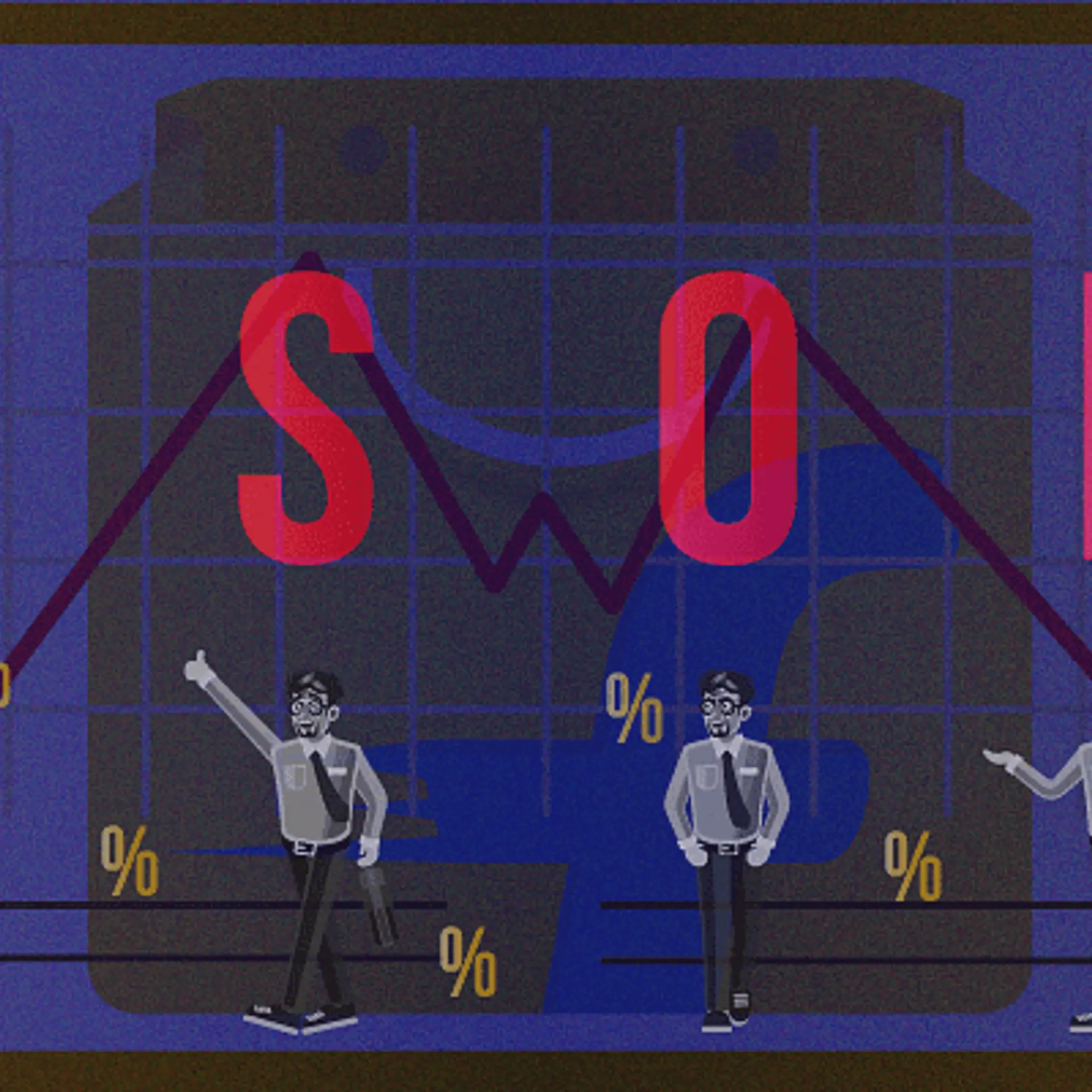In a quest for profitability, fashion ecommerce platforms sprout new models
As fashion ecommerce attracts more investments and startups, YourStory looks into the space which is evolving every day.

For all the hype about ecommerce, and how it makes shopping convenient, fact remains that no major online shopping platform is profitable as yet. Flipkart, being acquired by US retailer Walmart shows that even though valuations may go into billions, profitability remains elusive. Erstwhile ecommerce unicorn Snapdeal or India’s largest online marketplace ShopClues are not doing any better either.
Be it market conditions, or lack of sustainable business models, it is not just horizontal marketplaces that are struggling. In the retail category, fashion enjoys the highest margins, yet none of the fashion-focused ecommerce players have made it big either. Flipkart-owned Myntra is the indisputable market leader in fashion ecommerce, but is yet to show any profit.
While Myntra touched $1 billion GMV and opened hi-tech offline stores, smaller fashion ecommerce players have evolved with the times as well. Many have moved on from the regular retailer or marketplace models to more innovative idea for better customer engagement.
YourStory looks into some of the prominent players who have pivoted or grown into newer models.
FYND: What happened to Shopsense?
When Farooq Adam, Harsh Shah and Sreeraman MG launched Shopsense in 2012, their aim was to bridge the gap between the ease and convenience of click retail, with the touch-and-feel experience of brick retail.
Shopsense had a range of products that brands could use to improve customer experience. For instance, a shopper could browse through the entire range on a screen at a shop, and filter inside the store very easily. The startup would charge retail stores a monthly fixed fee of Rs 10,000 to Rs 15,000. (Less the number of stores, more the price, and vice versa, as they were charging for the engagement they created.)
The startup, which offered product-as-a-service, notched up clients like Lee, Satya Paul, Anita Dongre, Flying Machine, and Being Human. But in early 2016, Shopsense became FYND, when the team realised that if it had to scale up the business, they need other avenues. FYND Market Place and FYNDStore were the result of this thought process.

“FYND seemed more accessible, and easy-to-implement from the retailers’ perspective as there was no additional capex required. The omnichannel technology behind this remains the same and hence it seemed logical to pivot Shopsense to FYND,” says Harsh.
FYNDStore helps owners save sales due to unavailability of a product. Harsh claims that they are adding 6-10 percent sales to a brand’s total sales.
“For store associates, additional sales directly result in additional incentives,” he adds. The FYND app has around 10 million downloads and 1.5 lakh visitors on the website every month.
In India, omnichannel is still at a nascent stage. With the growing internet penetration and retail expansion in India, the market looks promising. “Moreover, not many companies provide this service in India and we took the first mover advantage to fill the market gap. In between the vision to explore the unexplored in India and driving the store sales, we came up with omnichannel model,” says Harsh.
There are multiple perks of having an inventory model:
- No warehousing cost involved
- No stock transfers within stores which saves the operational hassle for brands
- Fast delivery (in 2-3 days) as products are picked up from the stock point nearest to the customer
- Most of the orders are fulfilled from the same state
The Google-backed company works with 330 brands, including Steve Madden, Juicy Couture, DC Shoes, Brooks Brothers, Superdry, GAS, House of Anita Dongre (AND, Global Desi), Cotton World, Being Human etc.
Roposo: From discovery platform to social network
Roposo began as a fashion social network where people would post their style, photographs, and videos, related to fashion - like what they are wearing, what they are buying etc. Roposo thus built a community around fashion. If you saw (and like) someone’s post, you could select similar products to the ones in the picture (or video). These products come from platforms like Myntra or Jabong.
You were redirected to ecommerce platforms if you wanted to purchase, and Roposo got a commission. Other than through ad services on Google and Facebook, Roposo also generated revenue through direct ads by small sellers or individual service providers.
However, as the platform grew to a small social network, user posts were not restricted to fashion and were posting on lifestyle, travel, food, etc. But there was a glitch: Roposo’s recommendation engine did not allow anything apart from fashion to surface. “But we felt that this was against normal human behaviour. People were posting and consuming other categories as well,” says Roposo Co-founder and CEO Mayank Bhangadia.
Thus Roposo evolved to a new product - ‘TV by the people’ a year ago. It has channels like fashion quotient, rangoli, look good feel good, etc which cater to fashion audiences. There are also niche/specialised channels like Digi TV and News which, Mayank claims, have less user-generated content but are quite popular among the masses. It has more than 20 channels in various genres including sports, music, travel, spiritual, food, and comedy.
Roposo became a complete social network in August 2017. Post this transformation, the Roposo app was launched in nine languages, which Mayank says had improved the app traction multifold. “The time spent in the app was 12-13 minutes earlier; now it is close to 25 minutes per day. Also, the content creation has jumped from 300 posts a day in 2016, to 1.8 lakh posts per day now.” He adds that they have 11 million users today.
Users can make money while using the app through the traction created on their posts and Roposo also introduced coins one can earn by creating interesting content.
But isn’t this higher cash burn? Mayank says no. “We won't really call it cash burn because it is just a small cost to have good content generated on the platform, especially as we have no other marketing spend. We have essentially grown up to this scale via word-of-mouth,” he adds.
Simultaneously, the usage on its platform is shooting up 30-35 percent in terms of time spent with about 50 percent users creating video. All of this is increasing its server costs. “But our monetising methods should catch up with the server costs over the period of next 12-18 months,” says Mayank.

Wooplr: From marketplace to social commerce
Bengaluru-based startup Wooplr began as an Instagram or Pinterest for women’s fashion. That was in late 2012/early 2013. By creating a location-based online portal for products from physical shops, Wooplr aimed to exemplify the research-online-and-buy-offline model in India. Soon, it evolved to curate products from multiple online sites, personalised recommendations according to the consumer’s usage, and directed the buyer to the site from which the product has been sourced to complete the purchase.
Five years later, Wooplr stopped selling directly, and has evolved into an ‘influencer commerce’ platform. When an influencer uploads a picture, the followers are shown where you get that outfit (or similar outfits) from. If the inventory is ready, the brand itself will deliver it.
Wooplr does not need to spend on marketing as influencers drive traffic, and brands and customers do the rest. Brands pay Wooplr a commission of 15-20 percent on each purchase, thus ensuring profitability on every single transaction for the platform. They pass on 60 percent of that commission to the influencer.
It seems to be working for the six-year-old company: it recently broke even operationally, and now aims to go international this year, as an influencer-driven platform. Co-founder and CEO Arjun Zacharia says that they will be profitable before the end of this year.
But why would brands choose to give commission to Wooplr’s influencers rather than sell directly on Myntra? Arjun claims 93 percent of Myntra’s sales are from just seven percent of brands. In Wooplr’s case, he says, 40 percent of sales come from 60 percent of brands. He elaborates, “Players like Myntra have limited real estate on their website; so, everybody lands on the home page or a campaign page. With us, every influencer has a different way of showcasing what fashion is to them. It increases the breadth of discovery and provides visibility.”

Influencers have deeper relationships with their audience and networks, a relationship which, Arjun says, allows for a healthy ordering behaviour, leading to lesser returns (less than 10 percent of orders), more online payments, and a higher selling price.
Zapyle: from luxury to mid segment to private label
Bengaluru-based Zapyle started as an online marketplace for pre-owned luxury fashion. Along with pre-owned goods, Zapyle – which was launched in late 2015 - was also selling brand-new handbags. However, most of their customers were looking for more.
According to Zapyle founder and CEO Rashi Menda, validating on user’s preferences, Zapyle decided to explore the untapped, below-premium segment. They approached international brands like AX Paris, Zibi London, Evah London, and Little Mistress.
“They all belong to mid segment - which has aspirational value and are also affordable. Customers’ needs in designs, trends, quality, pricing etc. were all met,” says Rashi, adding that they grew by 500 percent when it entered this mid-segment (between high street and premium).
Understanding what the users need, early this year Zapyle started its private label ‘ISU.’ Targeting millennials who are looking for size, quality and trend, the brand’s offerings start at Rs 900 and go up to Rs 2899. Rashi says it contributes to 35 percent of Zapyle’s revenue today, and provides them 40 percent commission.

Backend changes for pivoting
For the above mentioned players, transformation of this scale has demanded massive changes in the backend too. For instance, it took four months to make the necessary changes in the backend when ShopSense turned into FYND – with focus on payment, commerce and logistics.
Earlier, there were different apps for individual brands; now it is all merged to a single application. (FYND app is for end-consumers, and FYNDstore is for store managers, store associates and store owners.)
Harsh says that while evolving, they had to let go of their previous team and add a few members for roles and functions like customer support, logistics, payments, commerce, market-places etc. While hiring, they were looking for problem solvers with experience in commerce, market-places, payments etc. The team has now grown from 32 members to 103 members.
In Roposo’s case, Mayank says, it was only about data in the back-end. He elaborates, “Earlier on the platform, there was content from users and the products associated with the content. Now there are only users and their posts. Then and now, everything is broken down into data. The only change was to create a base experience for vernacular users.”
Roposo app now provides video creation tools using which anyone can create videos. It also has augmentative reality (AR) on the platform which was launched this year in the first quarter.
For Zapyle too, there were back-end changes as it converted from a marketplace model. Earlier, it had only an app where people uploaded their closet by creating a profile. Also, it was only user-generated content at the time. Today, Zapyle generates content and user-generated content accounts for only 20-30 percent of the total.
“While moving from tech-oriented to a product-driven platform, we had to hire people in design, sales. Under private label, we hired designers, merchandisers. We plan to raise investment for private label next,” says Rashi.
So what is missing?
The answer is – much. If one were to look into Myntra, which has always stayed ahead in the game, there are some striking differentiations.
According to retail expert Devangshu Dutta, CEO at Third Eyesight management consultancy, from an early stage, Myntra focussed on merchandising from the point of view of the product rather than the point of view of numbers only.
“While the online business in India was driven by discounts, it focussed on developing a range and became a destination for the consumer seeking fashion. Myntra maintained this throughout,” he says.

The rapidly growing market demands e-tailers to clearly stand out and be the brand that consumers can connect with using certain attributes like quality, variety etc. Devangshu believes that one should make sure that the bulk of the business is coming from non-discounted sales.
“This is one of the biggest problems that online retailers face in the Indian market. The customers are so accustomed to discounted deals with brands that it is virtually impossible to make a profitable business,” he says. One should figure out what suits their business model, product mix, and the customers the best, rather than blindly following buzzwords like omnichannel, he adds.
Fashion ecommerce 2.0
The next chapter in the story of fashion ecommerce in India is being written by re-selling platforms like Shopperts and Shop101, and entrepreneurs who solely depend on social media. Online and offline discovery of fashion points have also taken a new step with platforms like Findow, Seenit, and MyBataz.
While rental and pre-owned fashion market is growing, consolidation and swivelling have been prominent over the last couple of years. For instance, ecommerce marketplace Limeroad – founded in 2012 and which has $50 million in funding – was focused on women’s fashion from day one, but expanded to include men’s fashion recently. Similarly, Mumbai-based online seller of cosmetics Nykaa now caters to male customers through its new platform Nykaamen, while also selling designer clothes on its main platform.
Notably, in India, so far the only ecommerce models that have scaled are the marketplace ones. Although more different models will continue to come up, Devangshu believes that whatever the model, the platform has to take ownership of the consumer. “
For example, a consumer will be approaching a market place as if it is the retailer. So the retailer has to curate and ensure that the product makes the service experience and it has to be differentiated from the others,” he explains. India is yet to see anything remotely close to the China models of convergence of social, entertainment and ecommerce. If anything, we use social networks like FB for that.
According to branding expert and angel investor Meeta Malhotra, if convergence is the future, who is best positioned to deliver this new ecommerce model - will it be Facebook adding ecommerce to its social platforms? She believes that the early success of Instagram shopping certainly seems to indicate this. “Then you will have the behemoths like Amazon and Walmart / Flipkart who will use sheer scale to consolidate their positions,” she says.
But where does this leave individual ecommerce companies? They will have to answer two questions: 1) Why should the customer buy from them? 2) Do they have a sustainable business model?
As Meeta says, time and again, smaller brands arise and disrupt incumbents. But it is the sharply focused value propositions that appeal to customers.







